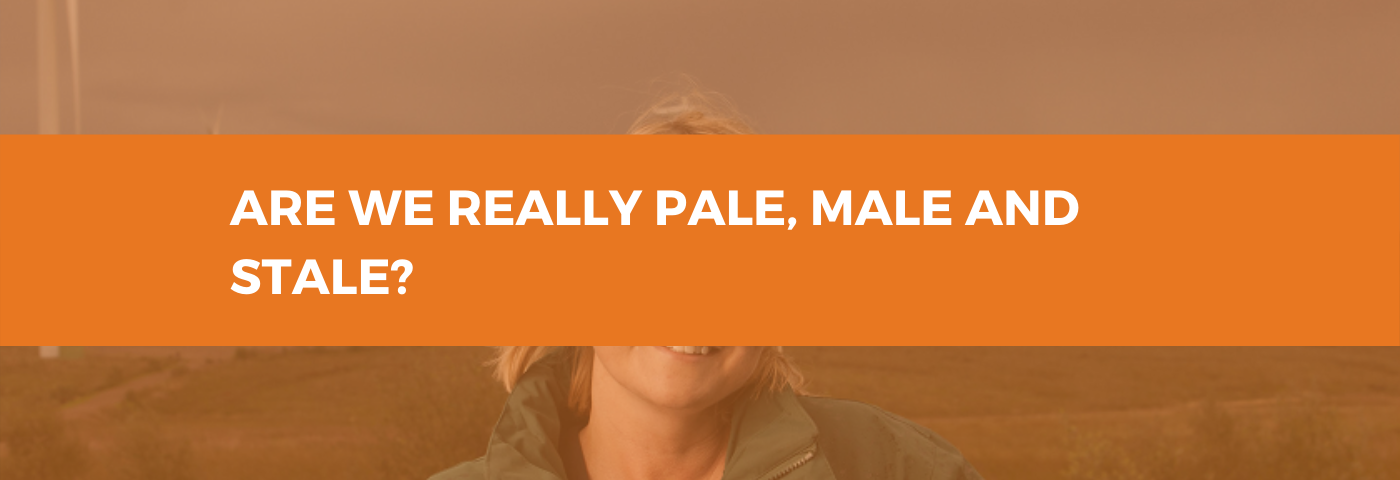Guest writer: Lindsay McQuade, CEO, ScottishPower Renewables
Historic stereotypes like these haunt so many of our industries, but a step-change in attitudes and cultures is driving real and lasting progress – and with it, a realisation that diversity and inclusion can actually boost the bottom line.
News that Scotland has been named the top performing region in the UK for gender equality in the workplace was published earlier this week. The Women in Work* index also highlights the year on year improvement for the UK as a whole.
Add this to a new sector deal for offshore wind which will not only deliver at least 30GW by 2030, but also seek to employ more than 33% women by the same date – more than double the current figure – it’s great news for our industry. And all this whilst helping pave the way to a cleaner, sustainable energy model at a time when the effects of climate change are in the headlines on a daily basis.
But are we doing enough to encourage and support young women to make the move, challenge old-skool convention and dream bigger?
As a female undergraduate, I’d never experienced being treated differently to my male peers. It was the late 90s when I started out in the banking and energy sectors that I spotted the difference. I was very clearly in the minority, often the only woman in the room. However during my 20 year career with ScottishPower, I’ve witnessed huge progress in promoting diversity in our industry, in part driven by a culture of speaking out and also spotting opportunities to support and coach colleagues to push harder, faster and think differently.
Now as the CEO of the UK’s leading wind energy developer, I’m acutely aware of my responsibility as a role model for other women across our industry and particularly those just setting out their career path at school. Encouraging girls and young women to maintain their interest in STEM subjects is vital – until the age of 6 or 7 there’s very little discernible difference in children’s interest in science and engineering. Something happens and we lose them – as a role model, I need to change that.
“Now as the CEO of the UK’s leading wind energy developer, I’m acutely aware of my responsibility as a role model for other women across our industry and particularly those just setting out their career path at school.”
My young daughter is far more environmentally aware than I ever was as a child. The notion that you would dig something out of the ground and burn it to make electricity is downright alien to her. And that view is typical of her peers. It’s her expectation that we are naturally environmentally conscientious – and rightly so.
That greater awareness of our existence on the planet, the impacts and consequences of our actions and the fundamental need for sustainable energy, need to be linked to career pathways. Driving the energy transition is just as much a responsibility for women as it is for men.
I want to do all I can to encourage and support our future engineers, lawyers, accountants, ecologists and economists and so many more professions on offer.
Tackling climate change makes business, societal and national economic sense and the transition to a sustainable energy future has to be part of this. The electrification of transport alone will help realise so many opportunities for our future generations.
At ScottishPower, we’re already investing a record £2bn in the UK this year to deliver reliable, clean and affordable power and building on our commitment to only generate 100% Green energy and with it, lasting career opportunities.
Who knows what our industry will be dubbed by the time we get to 2030 but it will most definitely be clean, keen and green!
*PwC, Women in Work Index, 2019
BIO:
Lindsay McQuade is the CEO at ScottishPower Renewables and responsible for the company’s fleet of over 2GW of renewable generation and future developments of wind and storage plant across the UK and Ireland.

